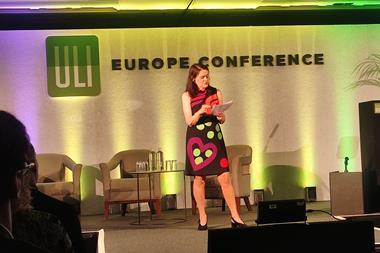The Green Finance Institute (GFI), in partnership with Lloyds Banking Group and NatWest Group, has unveiled a report outlining the potential for a green finance mechanism, called Property Linked Finance (PLF), to channel billions of pounds worth of private investment into sustainable real estate retrofits across the UK.
The report sets out a series of guiding principles and key steps for how PLF should be designed and launched in England and Wales, including calling for enabling legislation from the government as well as the establishment of pilot programmes, initially in the commercial sector.
Research from the GFI – the UK and Europe’s principal forum for innovation in green finance markets – estimates that PLF, a green financial solution not currently available in the UK, has the potential to catalyse between £52bn (€61bn) and £70bn of private investment into decarbonising the residential market across England, Scotland and Wales, contributing towards the UK’s net-zero ambitions.

An estimated £360bn of investment is needed to decarbonise the UK’s commercial and residential buildings by 2050, which cannot be met by the public purse alone. PLF offers “a vital new mechanism to crowd in private capital and to help achieve the necessary investment into the installation of low carbon technologies, energy efficiency and climate resilience projects in the UK, with the potential to scale globally”, the partners said.
They explained that PLF enables access to affordable and long-term funding for environmental improvements for buildings by linking the finance agreement to the property, rather than the owner. This means the payment obligation can transfer to the new owner when it is sold. Property owners would only pay for energy efficiency measures up until they sell their property, or the measures have been paid off, while new buyers benefit from a more energy efficient property, in return for continuing to make regular payments towards the upgrades. The mechanism would work for homeowners as well as owners of commercial properties.
Eloise Henderson-Day, PLF programme director, Green Finance Institute, said: “The Green Finance’s Institute’s vision is to create a thriving market that rapidly deploys capital towards the decarbonisation of UK buildings. Working with Lloyds Banking Group and NatWest Group, we have developed a ‘greenprint’ to launch and grow PLF in the UK, which has the potential to unlock billions of pounds in investment to retrofit our buildings and increase their energy efficiency and resilience.
“Successfully introducing PLF in the UK will require a collaborative approach across the entire built environment ecosystem. We are working with financial institutions, policymakers, regulators, local authorities, property owners and experts, to ensure financial, real estate and retrofit industries support the evolution of this innovative green finance solution, but more players are needed.
“By working together, we can create a robust, flexible and widely adopted PLF market in the UK and beyond, driving the transition to a more sustainable future for all of us.”
Andrew Asaam, homes director, consumer lending, at Lloyds Banking Group, said: “We’re pleased to support The Green Finance Institute’s research into the decarbonisation of UK properties. Exploring innovative solutions to increase investment and interest in energy efficiency initiatives is a positive step forward in helping the country meet its 2030 goals. However, there is still much work to do, and it will take the ecosystem working together to ensure ambitions are realised.”
Lloyd Cochrane, head of mortgages at NatWest Group, said: “The report released today by The Green Finance Institute shows the potential that Property Linked Finance has to make a major contribution to efforts to decarbonise the UK property sector. We are supportive of measures that attract private investment into solutions that will accelerate energy efficiency initiatives. The investment required to meet UK decarbonisation targets can’t be met by just one part of industry or government, so working like this to outline the opportunities and challenges that need to be addressed to make alternative funding concepts a reality is really important.”
To read the latest 91��ý���� magazine click here

















